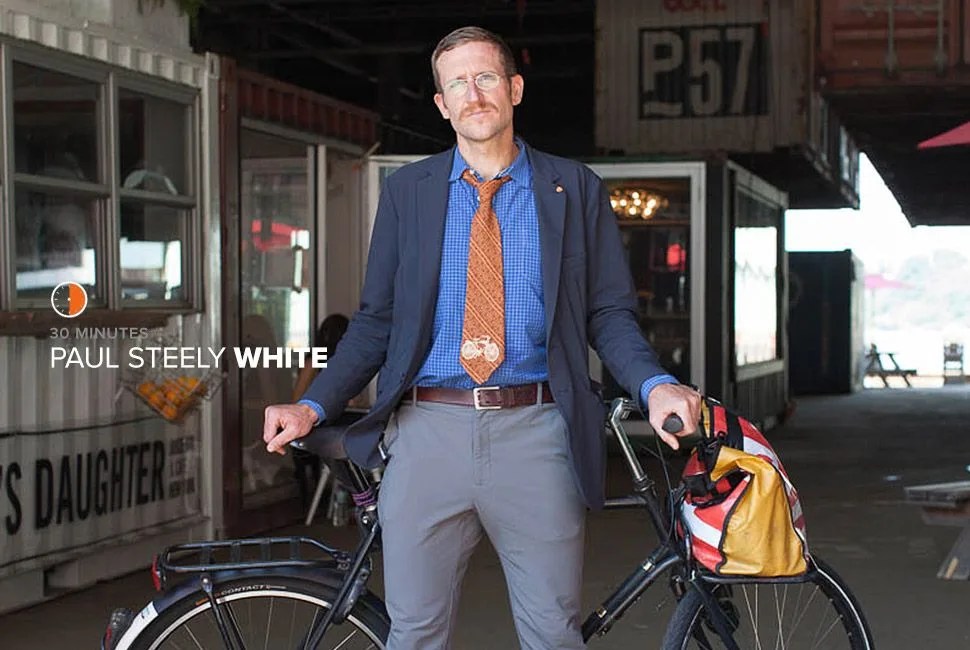Being a pedestrian or a cyclist in a city can be as harrowing as it is liberating. Nobody knows that better than Paul White, executive director of Transportation Alternatives, a New York City non-profit promoting cycling, walking and public transit. TA has been instrumental in improving conditions for cyclists in New York: they helped launch the Citi Bike share program, supported parking-protected bike lanes, and, most recently, helped pass a reduction of the city’s default speed limit to 25 miles per hour. We caught up with White to talk about his work, his family and his hand-forged Damascus steel knife.
MORE GP INTERVIEWS: Jozy Altidore, World Cup Striker | Parker Liautaud, Arctic Explorer | Michael Wardian, Distance Runner
Q. What’s one thing every man should know?
A. How to really listen. Turn yourself off for a moment and really take in what the human being facing you is trying to convey. Most people are terrible at listening, so just doing it kinda well will carry you far.
Q. What’s the hardest thing you’ve ever done?
A. I am still doing it! Being the ostensible leader of Transportation Alternatives is something that will never be easy. Our staff is so passionate, always striving, always challenging me in the best ways. And it’s a tough balance of trying to mind the store versus being out in the world hustling funding, winning political support, forging new alliances.
Q. What are you working on right now?
A. Winning more protected bike lanes, lowering the citywide speed limit to 25 mph, winning more 20 mph neighborhood slow zones, and getting the city and NYPD to enforce these safer speed limits in a meaningful way. Slowing cars and trucks down is the most important thing we can do right now to tip the balance in favor of the majority of us to travel car-free, and to prevent traffic crashes and humanize our streets.
The more cycling a city has, the safer the streets are for pedestrians, bikers and motorists alike.
Q. Name one thing you can’t live without.
A. My knife. My Dad hand-forged it from Damascus steel that he painstakingly wrought himself in his blacksmith shop. I hardly ever use it, but it’s the most special thing. Knife blades are always a trade-off between sharpness and durability. Damascus steel is meticulously woven from two different types of steel, so you get the best of both, and you can see the intricate woven bands in the blade itself.
